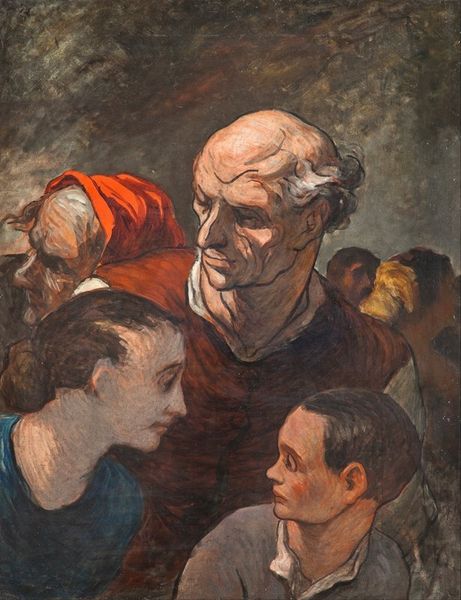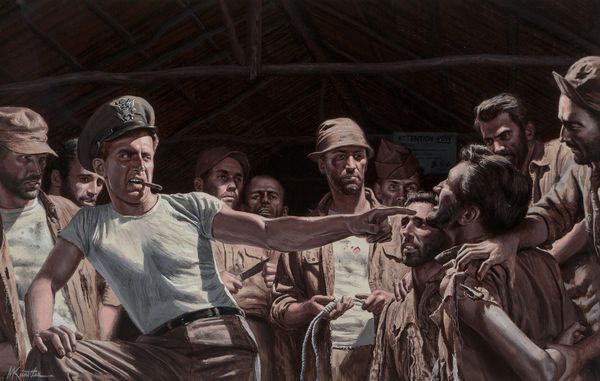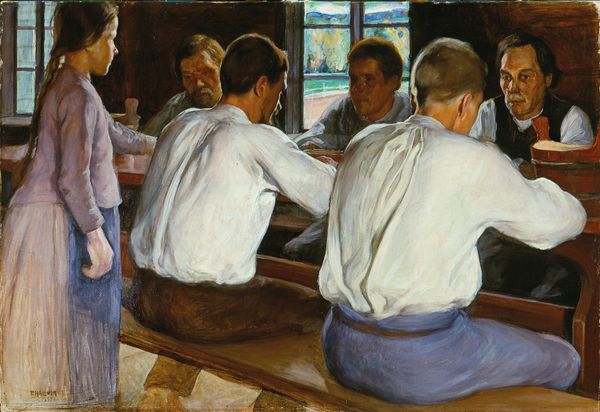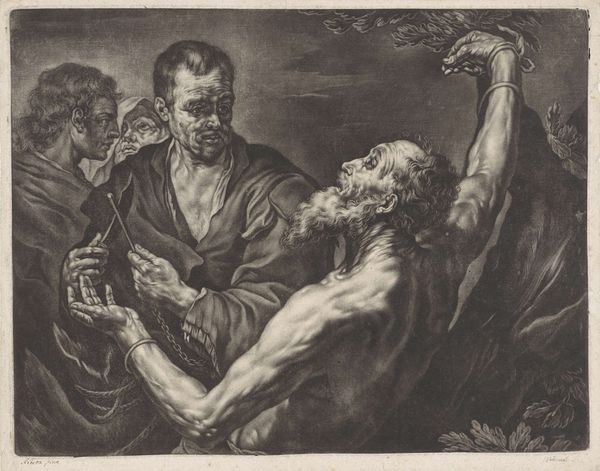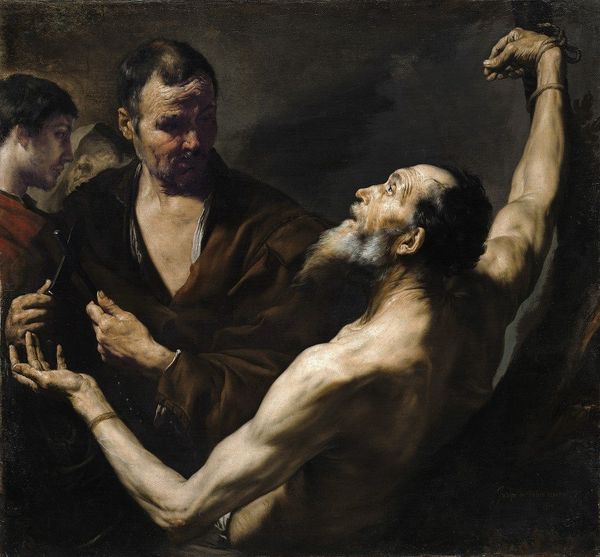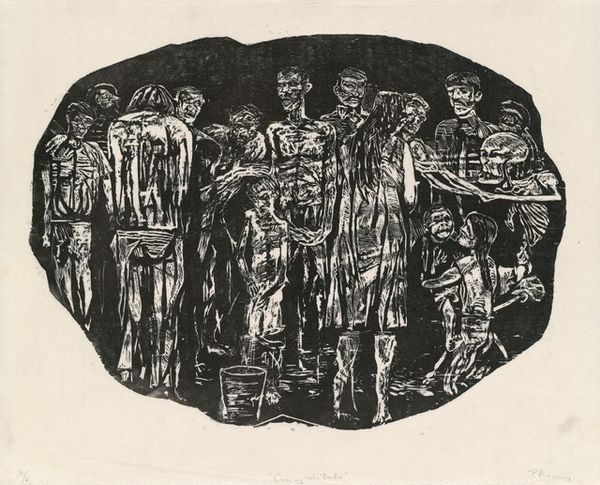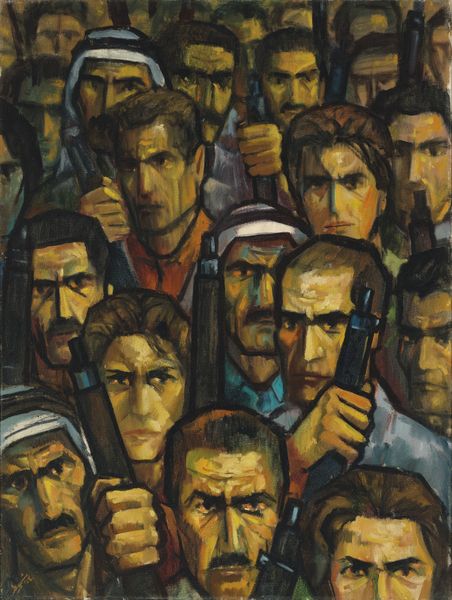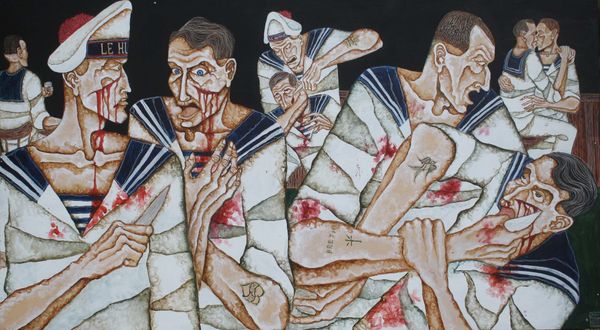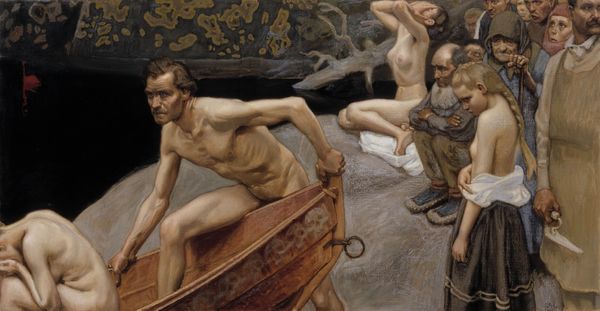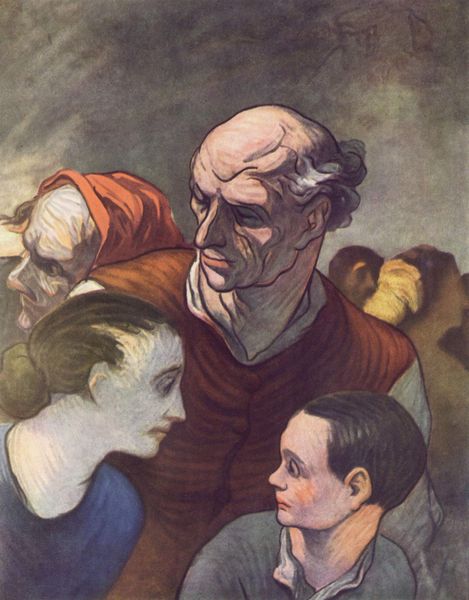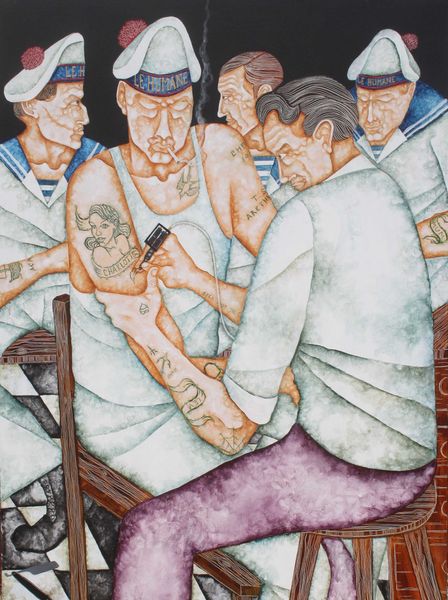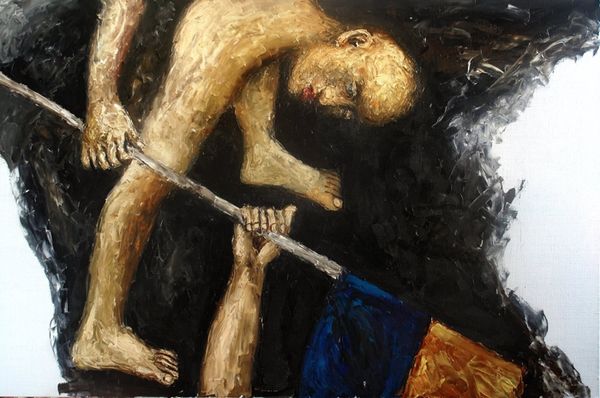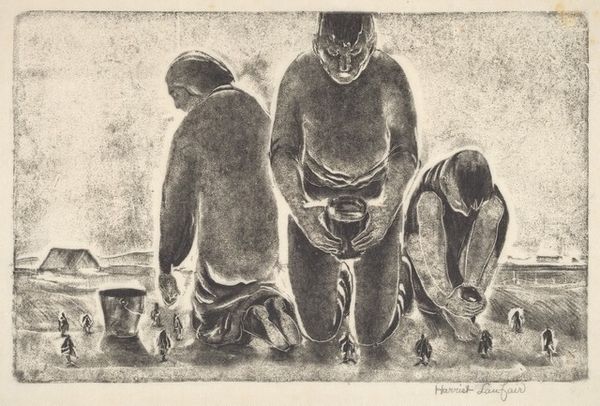
painting
#
portrait
#
painting
#
soviet-nonconformist-art
#
figuration
#
group-portraits
#
expressionism
#
realism
Copyright: Public domain
Curator: Look at the intensity radiating from this piece! Petrov-Vodkin's "Workers," painted in 1926, captures these men with a raw, almost sculptural quality. The limited palette—those earthy reds and blues—really intensifies their presence. What grabs you first about it? Editor: Immediately, the palpable tension. Their gaze feels accusatory, confrontational even. I am wondering, in this early Soviet context, what kind of worker is valorized here. Are they heroic laborers, or is there a questioning of the human cost of industrialization embedded here, perhaps even of male anxieties? Curator: Ah, that's a great question, the Soviet context is crucial. You sense this mood of stoicism or grim determination, almost as though each figure carries a world of burdens within those broad shoulders. Editor: Right, the intense gazes might be interpreted as resolve but perhaps also as resentment. Their working-class identity seems both a badge of honor and a potential site of exploitation under new revolutionary structures. Note the background figure casually smoking—his gaze detached, questioning. Curator: True, there's this potent mixture of exhaustion and resilience, the subtle nuances of the colors bring an intensity. They appear formidable. It almost has me thinking of social realism in the context of theater staging, everything exaggerated so as to appear as the representation of types instead of realistic persons. Editor: Exactly. The composition invites considering the role of manual labor in nation-building. Do these figures represent the utopian ideal, or is Petrov-Vodkin prompting viewers to consider labor's inherent contradictions? The averted gaze of that man smoking does question what sort of sacrifice this cause really asks for. Curator: He masterfully evokes an era of grand societal aspirations and anxieties. Those blue-collar uniforms—it seems more a matter of pride than suffering, or maybe they are in unison, and one could not do without the other? Editor: Maybe. Viewing this piece inspires many more questions about representation, historical context, and human dignity, but I feel they all revolve around the conditions for laborers as a central problematic. It would be amazing to do some social science studies about how these images can still activate similar sentiments for modern audiences. Curator: Absolutely. These 'Workers' are icons but still managing to prompt questions, inviting conversations beyond any fixed narratives. It has that timeless power, still speaking volumes today.
Comments
No comments
Be the first to comment and join the conversation on the ultimate creative platform.
